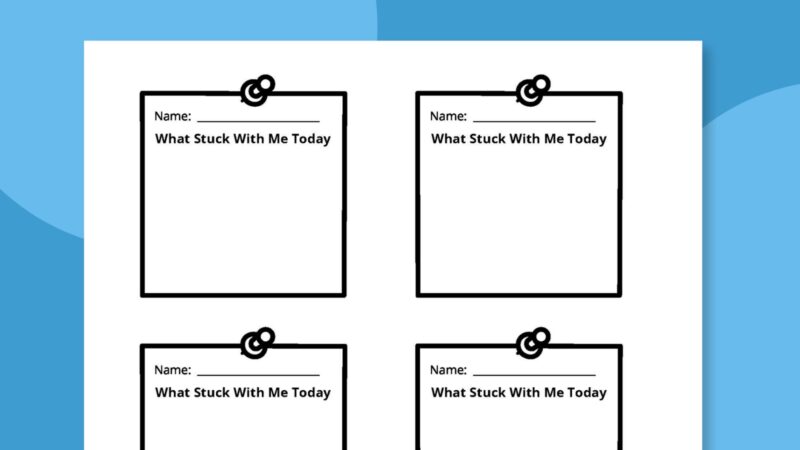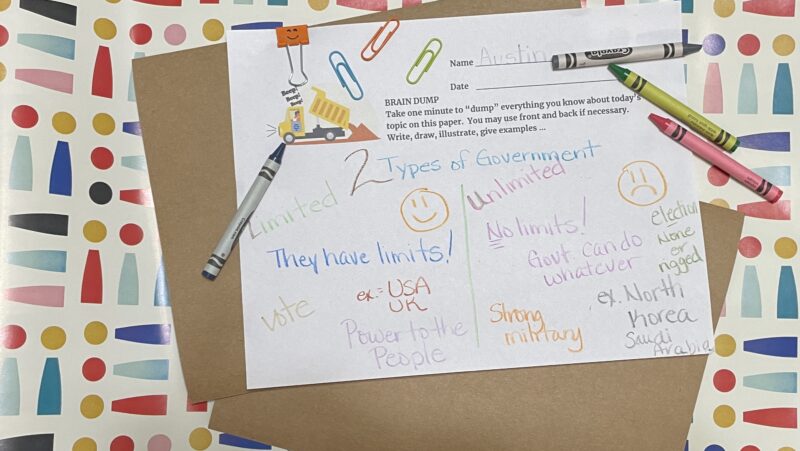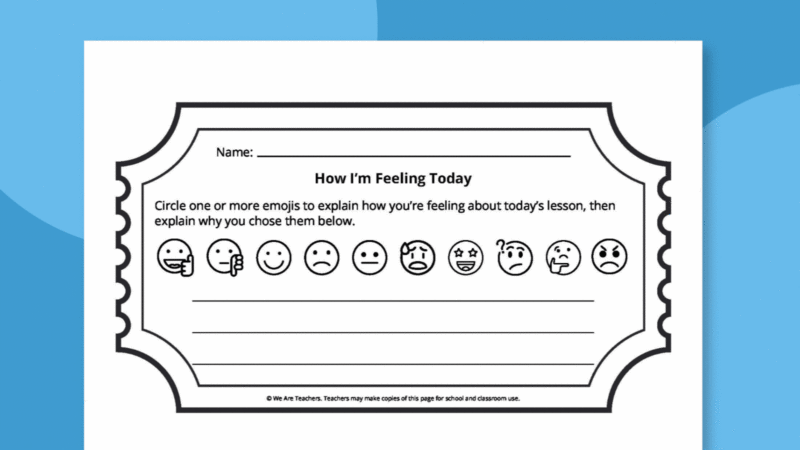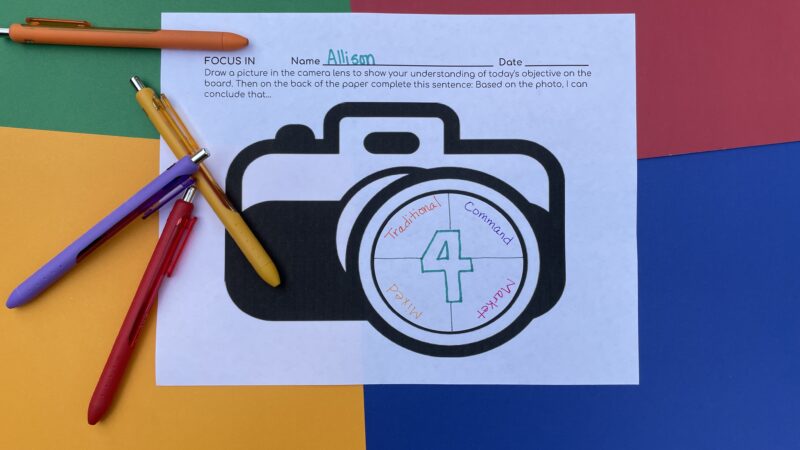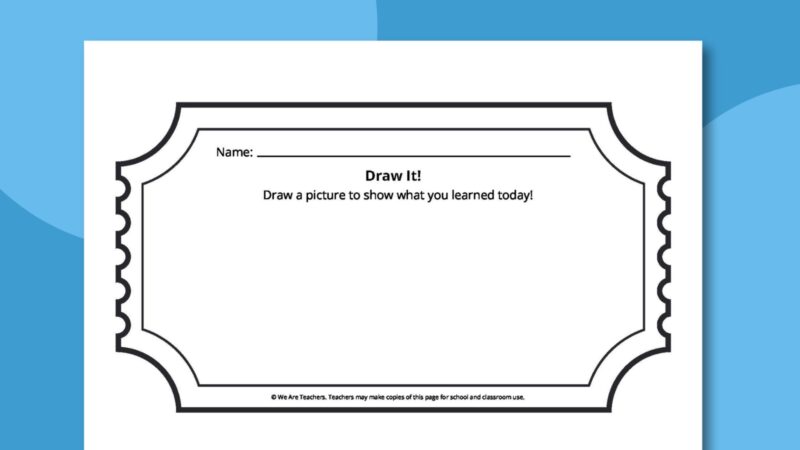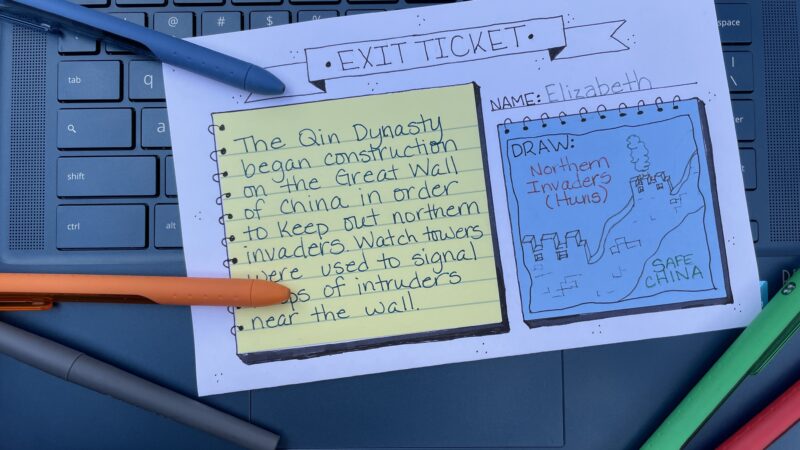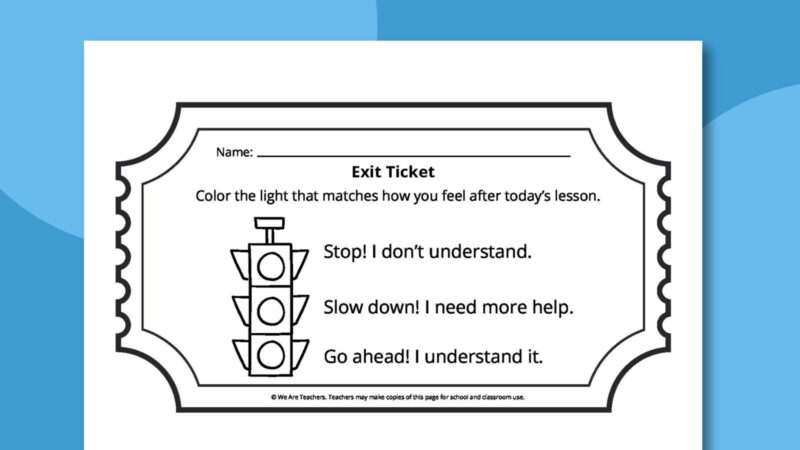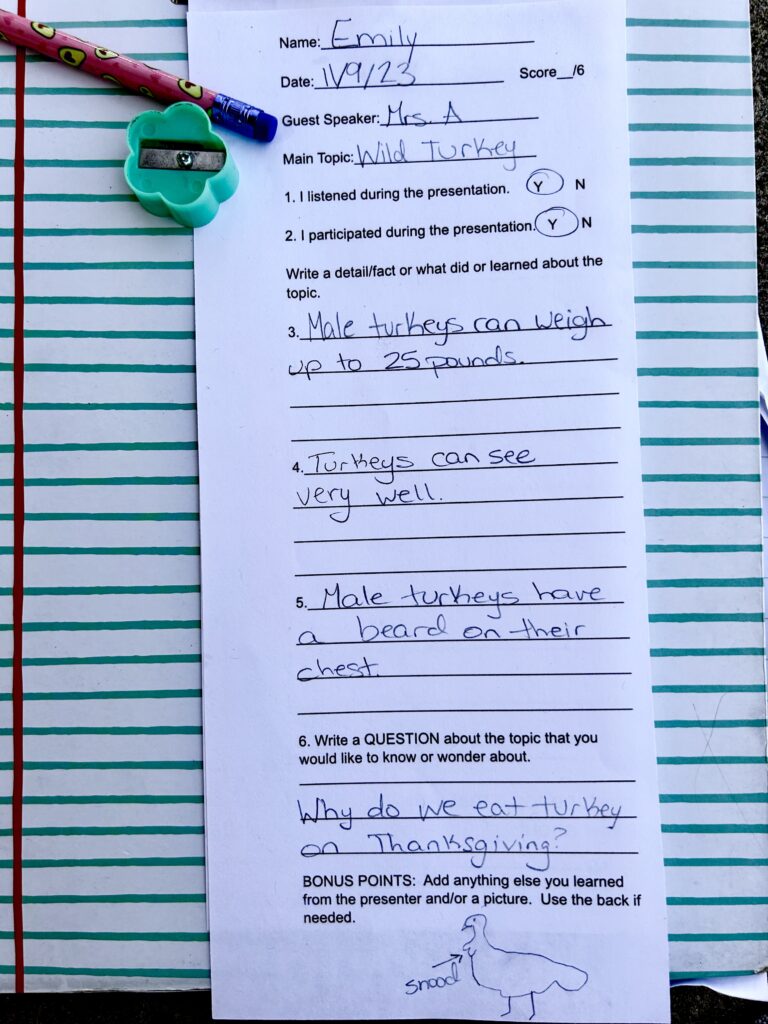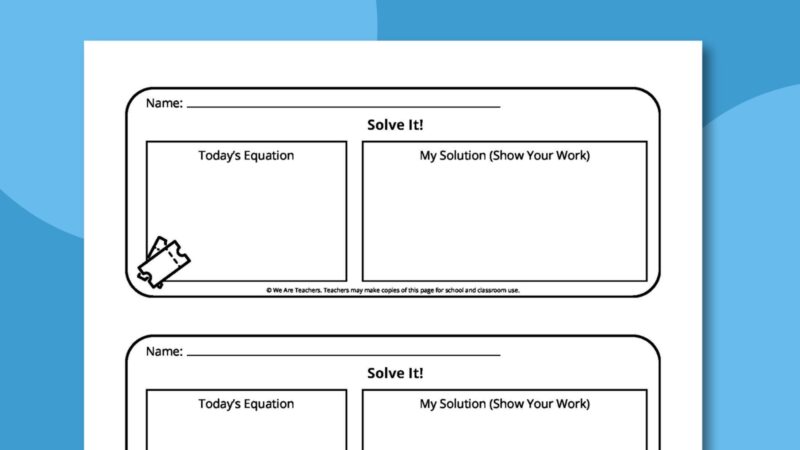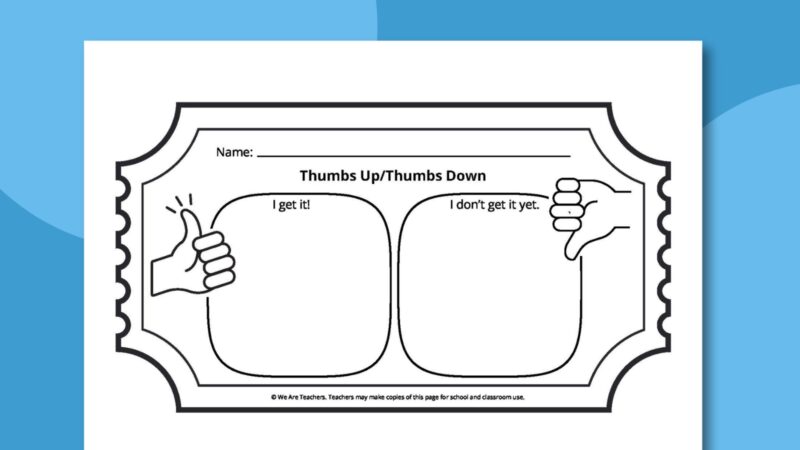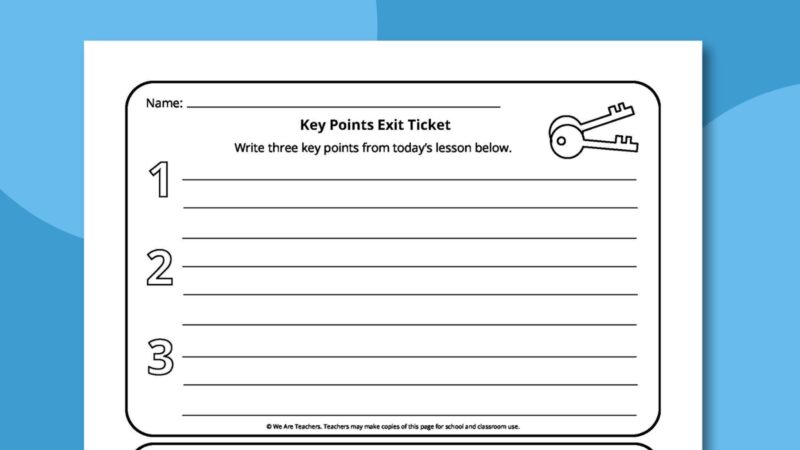Experienced teachers know that a good classroom is more about a back-and-forth, give-and-take model than just “teacher talks, students listen.” Students are most successful when teachers are constantly assessing their progress and adjusting instruction. Exit tickets are one terrific way to get immediate feedback on the lesson at hand. They work in every classroom at every level, and in virtual classrooms too. Here, we cover the basics of Exit Tickets 101, followed by our favorite ways to put them into practice.
What are exit tickets?
Exit tickets are responses written by students to questions posed by teachers at the end of a class or lesson. These quick, informal assessments help teachers quickly assess their students’ understanding of the material. In addition, exit tickets are an excellent source for targeted feedback about students’ experiences in your class.
What are the benefits of exit tickets?
- They inform instruction: Exit tickets reveal which students understand, who’s almost there, and who’s pretty much totally lost. Or, worst case, they can show if there are any sweeping misconceptions that need to be cleared up. This information allows you to differentiate instruction and revisit lessons with the whole class, small groups, or individually.
- They facilitate better communication between teacher and students: Quiet or shy students can express themselves without having to raise their hand or ask for help privately. Ultimately, exit tickets increase students’ participation and send the message that students’ thinking is valued.
- They build metacognition skills: In addition to gauging understanding of the academic topic at hand, exit tickets can reveal how students are feeling about their learning, how they perceive the learning environment in your classroom and whether their needs are being met.
How do I create effective exit tickets?
While exit tickets are not a hard-to-master art form, crafting effective ones does take practice. Here are a few tips to keep in mind:
- Ensure exit tickets align with lesson objectives: Exit tickets should relate directly to the lesson’s learning intentions and success criteria.
- Make the intention clear: Exit tickets should precisely reflect what you want to learn about students’ understanding.
- Keep it quick and easy: Students should be able to complete the exit ticket in five minutes or less. In addition, the process should be simple, with clear instructions on what to do with the exit ticket when they are finished.
- Offer variety: Employ different methods of questioning. Use multiple choice, short answer, or a handful of questions. Offer both closed- and open-ended options: Ask students to summarize what they’ve learned in their own words.
- Use your imagination: Creative exit tickets can help students engage and think outside the box.
Exit Ticket Ideas and Examples
FREE PRINTABLE
Exit Ticket Bundle
It’s a cinch to check for understanding after a lesson with our free printable exit ticket bundle featuring eight of the templates below.
More Exit Ticket Ideas and Examples
14. Encourage self-reflection
Valuable as they are to teachers, exit tickets are also important for helping students self-assess. This version lets them reflect on their strengths and areas for improvement.
15. Tell two facts and a fib
We love this interactive ticket idea! Kids write down two facts about today’s subject and one fib. They trade with another student to see if they can guess the incorrect fact before turning them in.
16. Keep an exit ticket journal
Give this helpful communication tool a bit more substance by having students keep them in a journal. This gives them a nice record of learning and can help when it comes time to review for tests or write a paper.
17. Make it a mini-assessment
You’ll have to prep these in advance, but an assessment exit ticket is sort of like a no-stress quiz. Kids simply do their best, without worrying about grades, and you get a better feel for their progress.
18. Collect answers on Google Forms
Teaching online or looking to save paper? Collect your tickets using Google Forms instead. This is especially useful if you’re already using Google Classroom.
20. Make a 3, 2, 1 list
The 3, 2, 1 method allows kids to self-assess, but it also lets them indicate a deeper level of interest in the topic at hand. Plus, it helps you, as the teacher, to get an accurate overview of how your students are doing. To make their list, ask students to write down three things they learned or worked on today, two things they’re still working on, and one question they have.
21. Sum it up with one sentence
Help your students distill what the day’s lesson was all about with a one-sentence summary. This requires students to prioritize the most important elements of the activity and reveals whether they are getting the “big picture.”
22. Let students weigh in
Kids often surprise us by looking at things in entirely different ways but still getting the correct answers. Their thoughts on a subject may provide ideas for helping other students who need a bit more instruction. At the end of the lesson, have students write down one tip that might help another student who is struggling with the objective.
23. Record a video
Have kids record video answers to a question posted by their teacher. This is such a cool idea for virtual classrooms, though it works in face-to-face classrooms too.
24. Check in while it’s fresh on their minds
There’s no need to wait until the end of the day to check in, especially in elementary classrooms. Try using exit tickets before lunch or recess. Kids too young to write? Have them tell you their answer verbally on their way out the door.
25. Finally, take time to analyze exit tickets
Make sure your exit tickets are worth the effort. Spend a little time at the end of each class or day looking over student responses, and make notes about any needs they indicate. A few ways you can use the information you get from them include: revisiting the lesson to address sticking points with the whole class, forming a small group for those who still need help while allowing others to move on, and meeting individually with students who need extra help.
Don’t forget to download your free printable exit ticket bundle
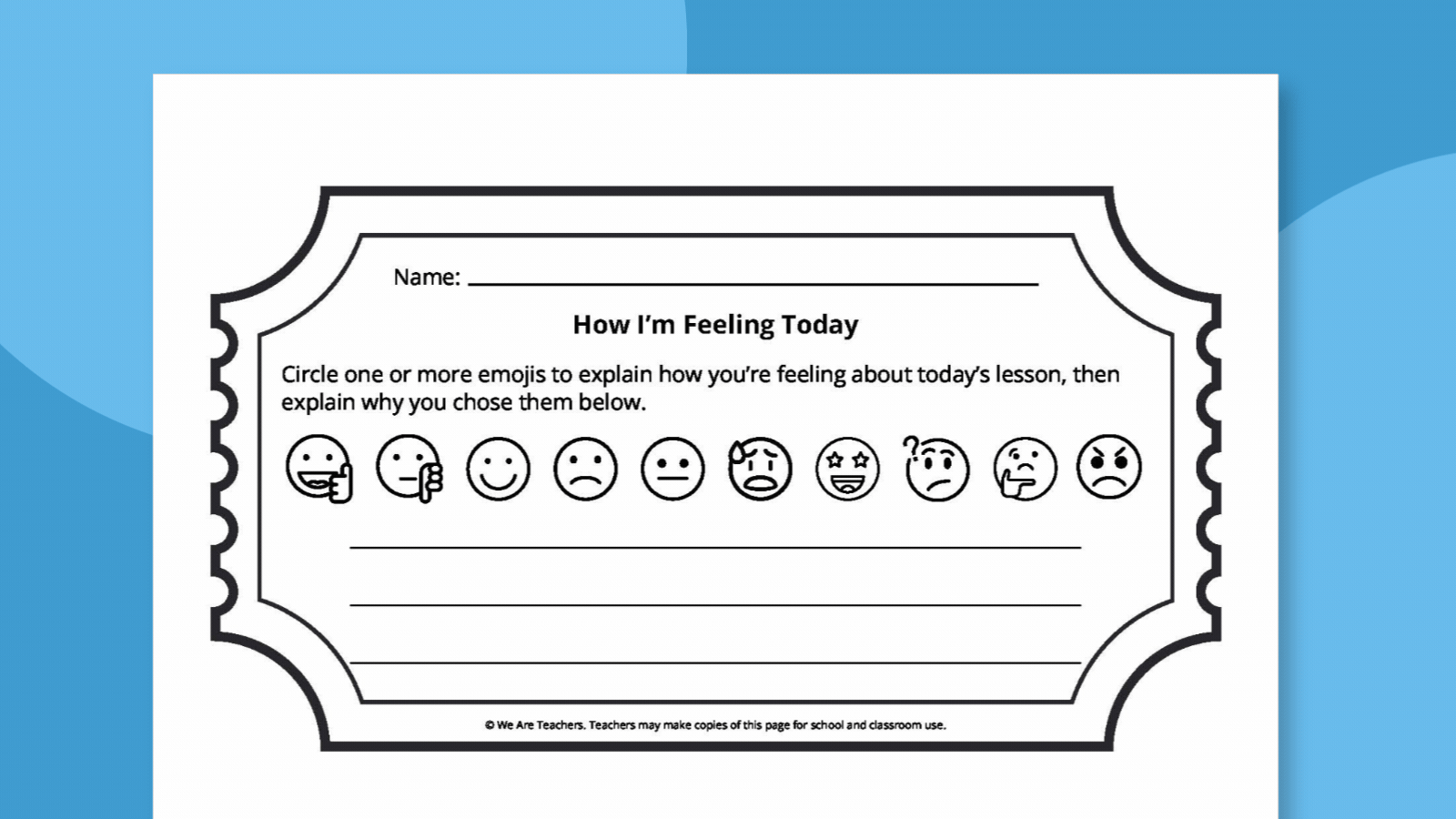
Plus, exit tickets are just one type of formative assessment. Check out our guide to formative assessment.
View the original article and our Inspiration here

